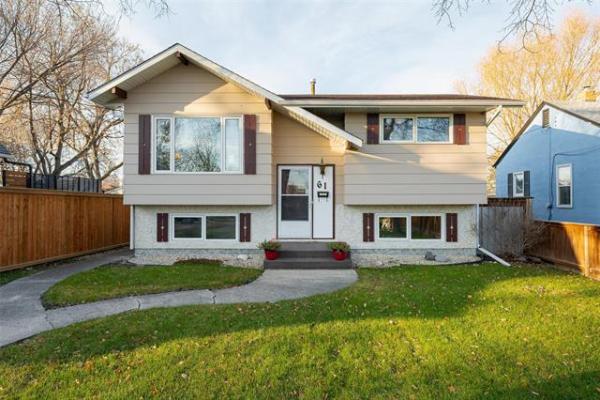Question: I own a small apartment building with six suites. We have had a lot of snow this year. Should I get the flat roof on my building shoveled? A roofing company advised that I should.
Please let me know what you think.
Thanks, Bill Keith
Answer: Shovelling a thick, heavy layer of snow from a roof is never a bad idea, but may only be necessary if it poses a danger of leakage or damage. Determining that will help you decide whether it is worth spending the money and effort.
We have indeed had above average frequency and amounts of snow this year, which is more than welcome after the recent extremely dry weather. While this abundance will help replenish the moisture in the soil, rivers, and lakes when it melts, it can be a hazard on some rooftops. Because your multi-family building has a flat slope roof, it may be much more prone to leakage than a typical pitched roof. This will largely depend on the type and condition of roofing materials, and the type of drainage.
Many older apartment buildings were constructed with what appear to be flat roofs, but they are not really flat. They should be slightly raised in some areas, with minimal slopes downward to others. The idea is that the high points in the roof will more easily drain to the lower ones, where there should be some form of drainage. In older buildings the roofing is typically constructed of multiple layers, with a granular cover, commonly known as tar and gravel. The individual layers are made up of bitumen impregnated paper which are held together, and to the roof sheathing, with melted tar or bitumen. The hot tar is mopped on to the individual layers, before the next layer of "felt" is applied. The final coat of heated liquid bitumen is then covered with a thin layer of small stones, to protect the surface from mechanical damage and UV light from the sun. While this older method is very labour-intensive, and costly, it is also very durable.
One of the main problems with an older tar and gravel roof, as described above, is that it may not wear evenly over its lifetime. One that is properly sloped from the middle to the perimeter to allow water to flow to outside drains, or scuppers, may not stay that way. Over time, the roofing can wear or shift, leaving lower areas near the middle of the roof. This can lead to excess water remaining in these low spots, for several days after heavy rains or melted snow. That type of lengthy ponding is much more likely to lead to a roof leak. If this water can’t easily make its way to the scuppers, or internal drains if present, there is much more chance it will sneak into a small hole or gap in the multiple layer roofing. So, if your roof is older and deteriorated, with frequent ponding, getting rid of excessive snow before it melts is warranted.
Also, any penetrations of the roof from plumbing or heating vents, wires, or other mechanical items, should have proper flashing and be well sealed. In a typical year, many of these flashings may be high enough to prevent leakage from several centimeters of accumulated snow. But in a winter like this, where layer upon layer of snow has built up, they may not be high enough to prevent leakage near the top of the fixtures. Especially with skylights, attic vents, roof access hatches, or other rooftop mountings, this may be a strong possibility. A visual inspection of the roof, by a properly trained and insured roofer, should help you determine whether this may occur.
If your roofing is newer and is single-ply modified bitumen, or equivalent modern materials designed for flat roofs, then leakage is less likely. Unfortunately, the condition of the roofing may only be determined in warmer seasons, when it is not covered with snow and ice. Removal of the bulk of the snow may help determine this, but only in warmer weather closer to spring. It may be prudent to have the snow shovelled just as it is beginning to melt, to address this concern.
The other reason to manually remove this season’s above-average amount of snow from the building’s roof is to minimize potential damage from the weight. As the weather warms, the moisture content of the snow will increase and so will the density. Light, fluffy, wind-blown accumulations at -20 C may turn into extremely heavy drifts with above freezing temps. This should mainly be a concern for older structures, or ones that have previously had structural issues or modifications in the past. Most buildings of this type were designed to support even the heaviest snow loads, but things do deteriorate or change over time. Especially if you have had upgrades to structural components or roof sheathing in the past, due to moisture damage, then eliminating a potential problem by removing the snow may be well worth it.
The requirement for excess snow removal from a flat-slope roof will largely depend on the condition of the roof coverings, drainage, and structural integrity. Just like maintenance on other portions of the building, if these have been kept in good condition, there may be no need for this task. On the other hand, if any of these are older or have been neglected, hiring a safety-conscious roofer to remove the heavy snow may be a wise investment.
Ari Marantz is the owner of Trained Eye Home Inspection Ltd. and a Registered Home Inspector (RHI)(cahpi.ca). Questions can be emailed to the address below. Ari can be reached at 204-291-5358 or check out his website at trainedeye.ca.
trainedeye@iname.com



